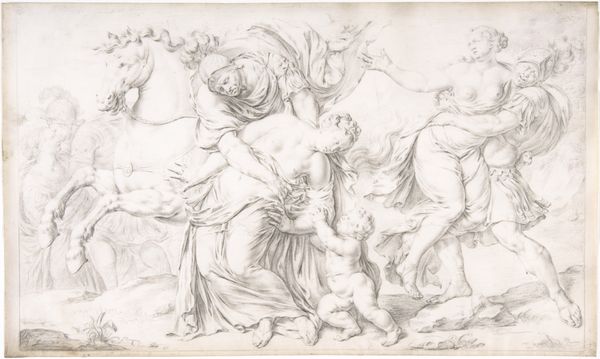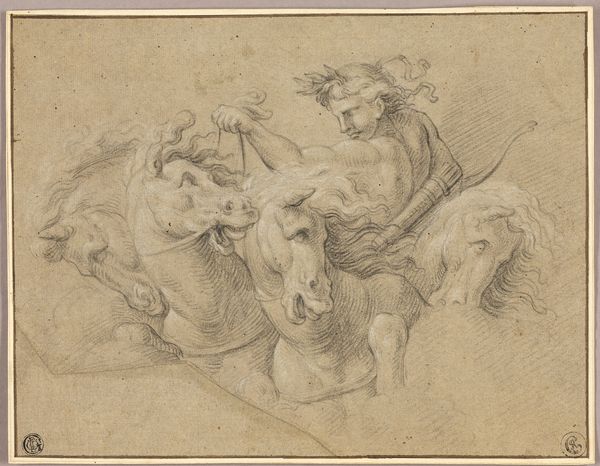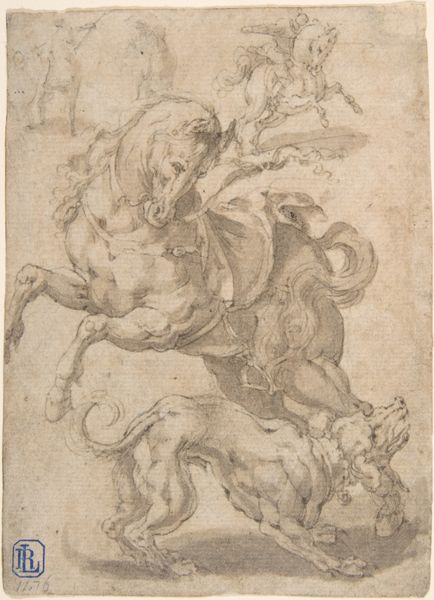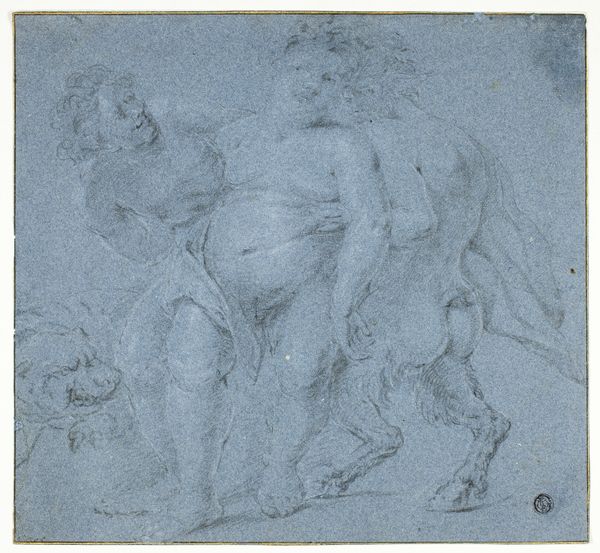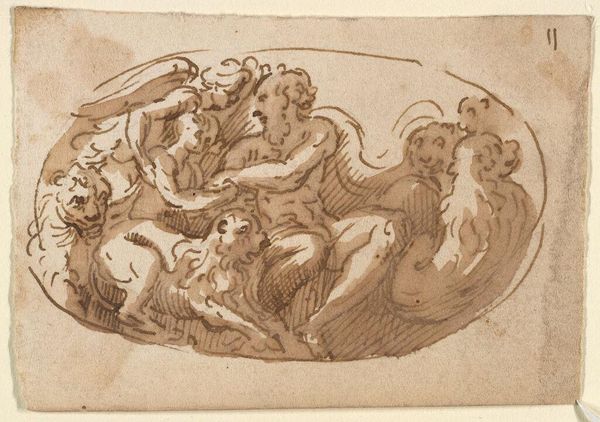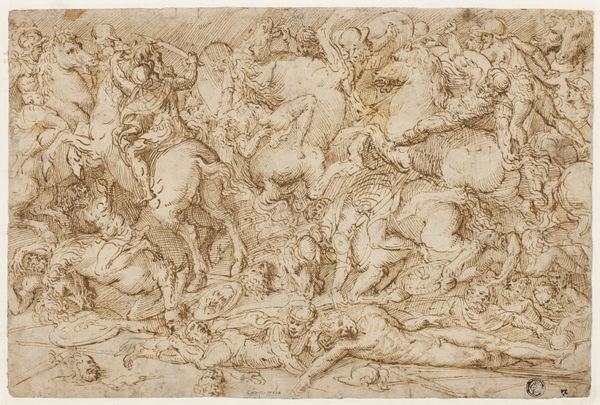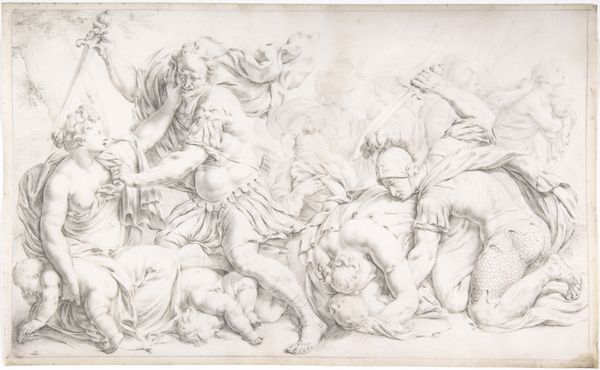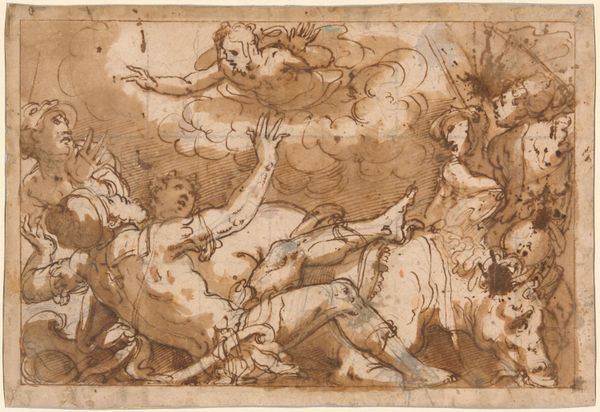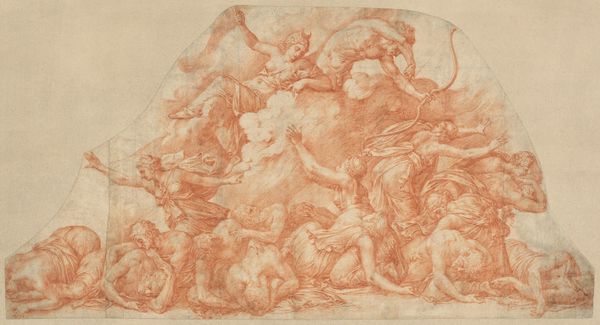
drawing, red-chalk, gouache
#
drawing
#
high-renaissance
#
narrative-art
#
red-chalk
#
gouache
#
charcoal drawing
#
figuration
#
history-painting
Copyright: Public Domain
Curator: This captivating red chalk and gouache drawing is Parmigianino’s “Daniel in the Lion's Den,” created around 1531 to 1535. It currently resides in the Städel Museum. Editor: Immediately, I'm struck by the tension between the dynamism of the composition and the serene expressions on the figures' faces. There's a controlled chaos here. Curator: Tell me more. What symbolic weight does the imagery carry for you? Editor: The lions, typically symbols of ferocious power, are rendered almost docile, even comforting. It represents faith’s capacity to transform danger into tranquility. The grouping of figures observing from the left seem fearful, as if still wrestling with this transformational promise, yet all bathed in this ochre of the red chalk, unifying them under the scene. Curator: And looking closely at Parmigianino's method, you can see the materiality serves the iconography. The red chalk, coupled with the use of gouache to create highlights, adds depth and movement to the scene. The relative affordability and workability of chalk allowed for a looser, more expressive preparatory style than a full painting. Editor: The choice of materials seems perfectly aligned with the subject— the earthiness of the chalk lends itself to conveying something primal being tamed through belief. What social contexts may have shaped its visual language? Curator: This was the High Renaissance; the cultural appetite was very receptive to biblical narratives reinterpreted through a classical lens. Chalk allowed more experimentation at different studios across Italy in those interpretations. Further, Daniel represents the individual’s power through unwavering devotion and right action during great turmoil; an idealized human-animal symbiosis, demonstrating social and self mastery. Editor: Absolutely. That tension, now that you mention it, may well reflect the inner conflicts of that historical moment—a negotiation between inherited dogma and budding secular ideals. It is all communicated through potent iconographic shorthands. Curator: Indeed. Thinking about “Daniel in the Lion's Den,” the image resonates beyond its High Renaissance origins by raising compelling questions about what belief actually achieves and its material expression within communities. Editor: It leaves one to ponder how, over time, ancient imagery takes on these varied shades of significance.
Comments
No comments
Be the first to comment and join the conversation on the ultimate creative platform.
